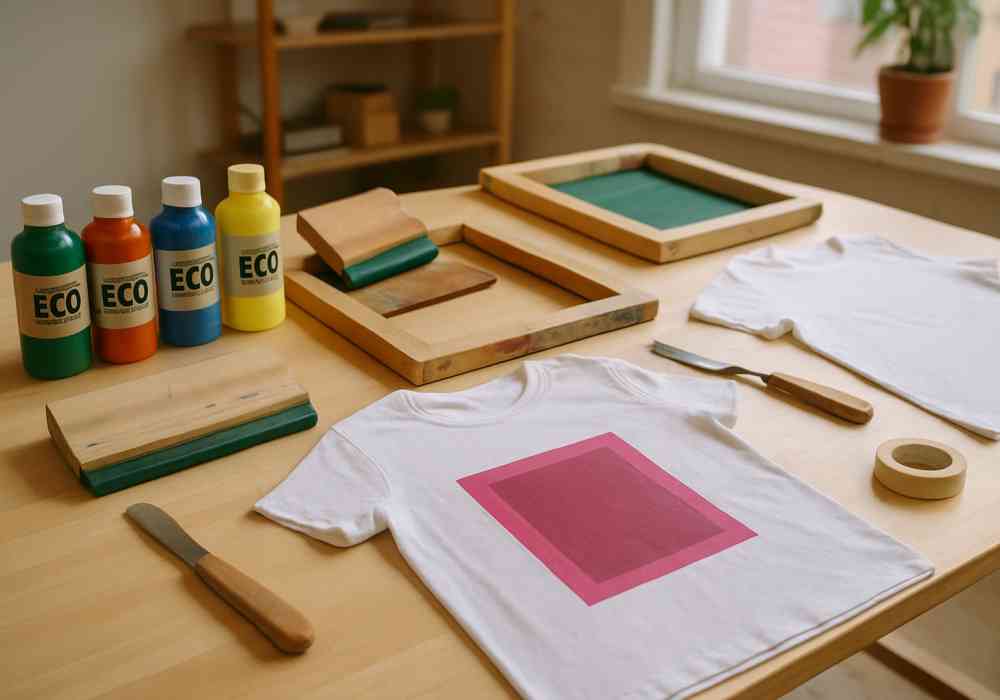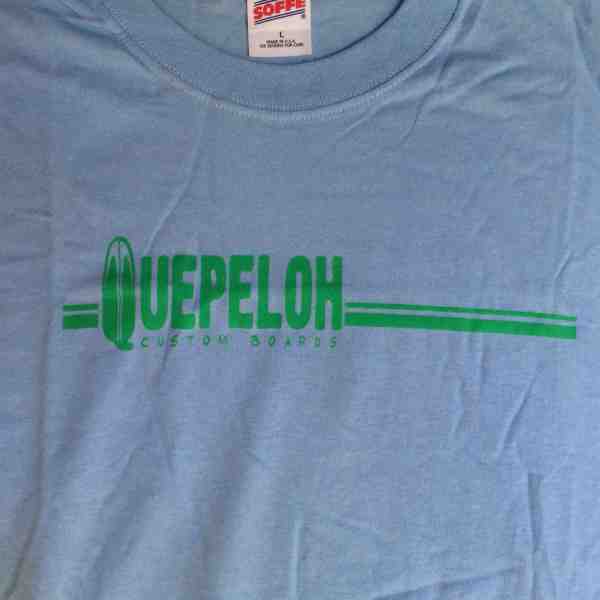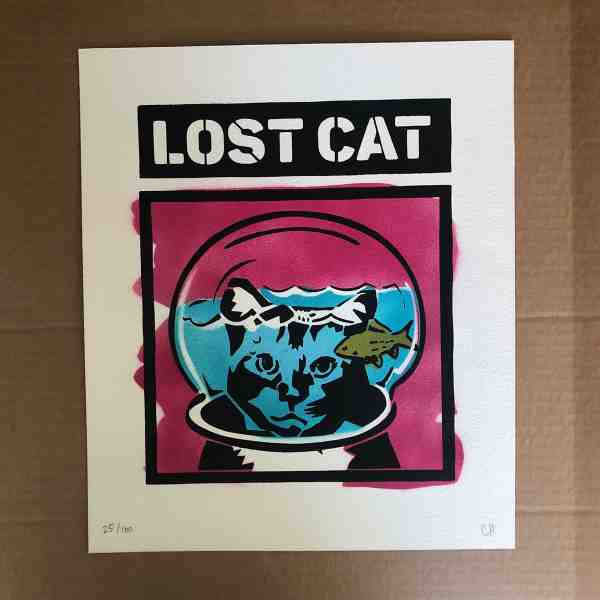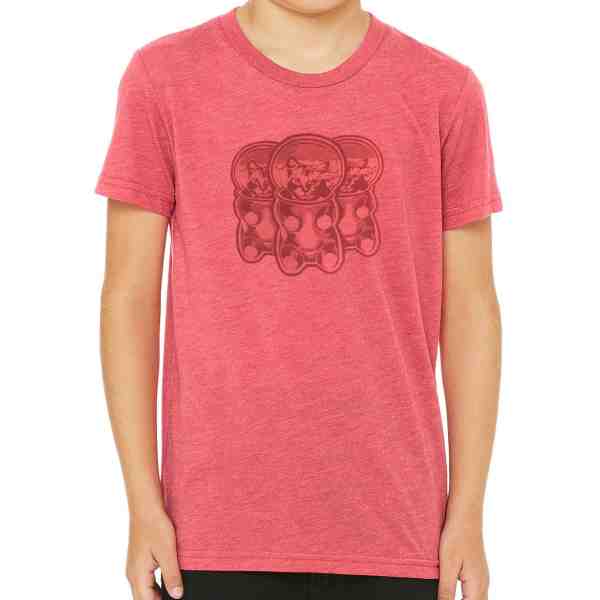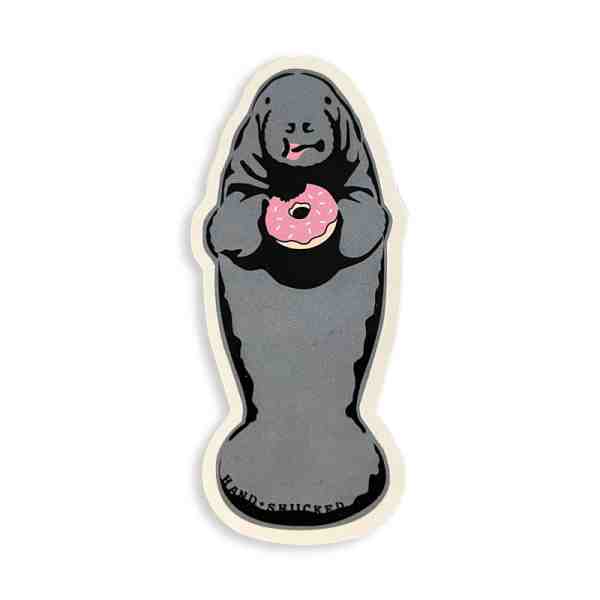DIY Fashion Fun: Hand Printing T-Shirts Made Easy
Why Hand Printed T-Shirts Are Taking Over DIY Fashion
Hand printed t shirts offer a creative escape from mass-produced fashion, letting you design unique wearable art that reflects your personal style. These artisanal garments combine traditional printing techniques with modern eco-friendly materials to create one-of-a-kind pieces that stand out from the crowd.
Quick Overview: Hand Printed T-Shirts at a Glance
- What they are: T-shirts created using manual printing techniques like screen printing, block printing, or linocut
- Key benefits: Unique designs, eco-friendly inks, support for local artists, authentic handmade feel
- Price range: $15-$40 for handmade pieces, $20-$30 most common
- Where to buy: Etsy, local markets, artist websites, specialty boutiques
- Care: Cold wash inside-out, air dry for longest-lasting prints
The appeal goes beyond just wearing something different. Hand printed t-shirts represent slow fashion - a movement away from disposable clothing toward meaningful pieces made with care. Each shirt carries slight variations in print opacity and texture that mark it as authentically handmade, something no machine can replicate.
Whether you’re looking to create your own designs or support independent artists, hand printing offers an accessible entry point into custom apparel. The process uses simple tools like squeegees, carved blocks, and water-based inks that are gentler on both your skin and the environment.
I’m Chris Higgins, a trained graphic artist who shifted from commercial design work to creating original art under the Handshucked name after more than a decade in Key West’s creative scene. My experience with hand printed t shirts taught me that the best designs combine bold illustration with simplified elements - and often, a good joke.
What Are Hand Printed T-Shirts?
Hand printed t shirts are like the homemade cookies of the fashion world - each one carries the personal touch of its maker. Instead of machines churning out thousands of identical pieces, these artisanal garments are created through manual printing processes where human hands guide every step.
Think of it as slow fashion at its finest. When an artist creates a hand printed shirt, they’re mixing their own inks, positioning screens by eye, and pulling each print with deliberate care. The process might use traditional screen printing with mesh screens, or perhaps block printing with hand-carved designs pressed into fabric.
What makes these shirts special isn’t perfection - it’s the beautiful imperfections. Those slight texture variations in ink coverage? The tiny differences in color saturation from one shirt to the next? These aren’t mistakes; they’re proof that a real person made your shirt, not a machine.
Most hand printers choose eco-friendly inks that are water-based and gentle on both your skin and the planet. These inks actually soak into the fabric fibers instead of sitting on top like a plastic sticker, which means your shirt gets softer with every wash instead of cracking and peeling.
Differences from Mass Production
The difference between hand printed and mass-produced shirts is like comparing a handwritten letter to a photocopied flyer. Mass production is all about speed and volume - factories can pump out thousands of identical shirts in a single day using automated equipment.
Hand printing works on a completely different scale. An artist might spend an entire afternoon creating just 20-50 shirts in a batch, carefully checking each one for quality. This smaller scale means every shirt gets individual attention, and if something doesn’t look right, it can be fixed on the spot.
The limited edition nature of hand printed shirts is part of their charm. When you buy one, you’re getting something that exists in small quantities. No worries about showing up to a party wearing the same shirt as three other people - your hand printed piece is genuinely one-of-a-kind.
This approach also creates much less waste. Instead of overproducing inventory that might end up in landfills, hand printers typically work with smaller batches that match actual demand. It’s a more thoughtful way to make clothing.
Benefits of Hand Printed T-Shirts
Wearing a hand printed t shirt means you’re supporting real artists and makers in your community. Many of these businesses are small operations run by creative people who pour their heart into every design. When you buy from them, you’re directly supporting someone’s artistic career.
The authenticity factor is huge too. These shirts often feature original artwork you won’t find anywhere else. At Handshucked, our “Lost Cat” and “Hungry Manatee” series capture Key West’s quirky spirit in ways that mass-market designs simply can’t match. Each design tells a story that connects to real places and experiences.
From a style perspective, hand printed shirts let you express your personal style in ways that mainstream fashion doesn’t allow. Want a shirt with a Buddha Cat drinking lemonade? You’re probably not finding that at the mall, but you might find it at a local art fair or online marketplace.
The quality difference is noticeable too. Hand printers typically start with better cotton blanks and use higher-quality inks. The printing process itself is more controlled, which often results in designs that last longer and look better over time. It’s clothing that’s made to be worn and loved, not thrown away after a few washes.
Essential Gear + DIY Step-by-Step
Getting started with hand printed t shirts doesn’t require a massive investment, though having the right tools makes all the difference. After years of hand printing everything from our “Lost Cat” series to custom commissions, I’ve learned that you can begin with basic equipment and build your setup over time.
The essential tools vary depending on your chosen method, but most setups need squeegees for screen printing, carving tools for block work, quality fabric ink, cotton t-shirt blanks, and some way to cure your prints with heat. Don’t forget about ventilation - even eco-friendly inks can get a bit funky during printing and curing.
For inks, water-based options are your best friend when starting out. They’re more forgiving than plastisol alternatives, clean up with soap and water, and create prints that feel soft against your skin. Scientific research on eco-friendly dyes confirms that modern water-based inks deliver excellent durability while staying environmentally responsible.
Each printing method has its sweet spot. Screen printing works beautifully for multi-color designs and larger runs, though it requires intermediate skills and moderate investment. Block printing offers the perfect beginner-friendly entry point with low costs and simple techniques. Digital printing handles full-color photos well but lacks the authentic handmade character that makes hand printing special.
| Method | Best For | Skill Level | Cost | Durability |
|---|---|---|---|---|
| Screen Printing | Multi-color designs, larger runs | Intermediate | Medium | Excellent |
| Block Printing | Simple designs, textures | Beginner | Low | Good |
| Digital Heat Transfer | Full-color photos, small runs | Beginner | Medium | Good |
Screen Printing Basics
Screen printing produces the most professional results for hand printed t shirts, creating vibrant colors that stay bright wash after wash. The magic happens when you push ink through a mesh screen onto fabric, with your design acting as a stencil to control where the ink lands.
Creating your screen starts with photo emulsion - a light-sensitive coating that hardens under UV light. You coat your screen, let it dry in darkness, then place your design (printed on clear film) on top and blast it with bright light. The emulsion under your design’s clear areas stays soft and washes away, leaving open mesh for ink to pass through.
The actual printing involves two key movements: the flood stroke and the print stroke. The flood stroke gently fills the screen’s mesh with ink, while the print stroke forces that ink down through the mesh onto your shirt. Getting consistent pressure and speed takes practice, but once you nail it, you’ll be cranking out professional-quality prints.
Multi-color layers require separate screens for each color, with careful alignment to ensure everything lines up perfectly. This is where screen printing gets tricky, but it’s also where you can create stunning effects that single-color prints just can’t match.
Block & Linocut Printing
Block printing offers a wonderfully tactile way to create hand printed t shirts without the complexity of screen printing. You’re essentially making a giant stamp by carving linoleum or wood, then pressing it onto fabric with ink.
Carved linoleum works better than wood for beginners because it’s softer and produces cleaner lines. Use V-shaped gouges for fine details and U-shaped ones for removing larger areas. The golden rule: always carve away from your body, and take your time - rushed carving leads to slipped tools and ruined blocks.
Relief ink designed for fabric gives the best results. It’s thicker and stickier than screen printing ink, ensuring good transfer from your block to the shirt. You can apply it with a roller or even a stamp pad for smaller designs.
The beauty of block printing lies in creating repeat patterns and organic textures. Each impression carries slight variations that add character and authenticity to your design. It’s perfect for incorporating hand-drawn elements that feel genuinely personal and unique.
Testing, Drying & Curing Prints
Before printing your masterpiece on a good shirt, always create a test swatch using scraps of the same fabric. This lets you check color accuracy, ink coverage, and overall print quality without risking a blank you can’t replace.
Proper curing makes the difference between prints that last and ones that fade after a few washes. A heat press works perfectly for small batches - typically 320°F for 45-60 seconds gives you solid curing. For larger operations, a conveyor dryer maintains consistent temperature and timing.
Air cure is possible with some water-based inks, but it takes 24-48 hours and doesn’t achieve the same durability as heat curing. If you’re going the air cure route, ensure good ventilation and resist the urge to touch or move the prints while they’re setting.
The final quality check involves testing wash fastness. After curing, throw a test piece in hot water to make sure the ink doesn’t bleed or fade excessively. Properly cured water-based inks should show minimal color loss even after multiple trips through the washing machine.
Care, Cost & Where to Buy
Taking care of your hand printed t shirts is surprisingly simple, but doing it right makes all the difference in how long they’ll last. The golden rule is to treat them gently - these aren’t your average mass-produced shirts that can handle whatever you throw at them.
Always wash your hand printed shirts in cold water and turn them inside-out before tossing them in the machine. This protects the printed surface from rubbing against other clothes and prevents the design from fading prematurely. Stick with mild detergent - those heavy-duty formulas can be harsh on hand-printed inks.
Skip the dryer when possible. Air drying keeps the fabric and print looking fresh longer, though a low heat setting won’t hurt if you’re in a hurry. The extra care pays off - properly maintained hand printed shirts can look great for years.
When it comes to pricing, hand printed t shirts typically fall in the $15-$40 range, with most quality pieces landing between $20-$30. This might seem steep compared to big-box store shirts, but remember what goes into each one. Quality cotton blanks cost $3-8 each, eco-friendly inks add another $1-3 per shirt, and the actual hand printing takes 15-30 minutes per piece.
Custom commissions usually cost more since they involve additional design work. You’re paying for the artist’s time to create something unique just for you, plus all the back-and-forth to get it perfect.
The best places to find quality hand printed shirts are Etsy, local markets, and artist websites. These venues connect you directly with the people making the shirts, so you can ask questions about materials, care instructions, and custom options. Many artists also sell at specialty boutiques that focus on handmade goods.
For unique Key West-inspired designs, you can check out our men’s section, where we feature everything from our signature “Lost Cat” series to original street art interpretations.
Shopping Tips for Quality
Not all hand printed t shirts are created equal, so knowing what to look for can save you from disappointment. Start with the shirt itself - feel the fiber weight and check for smooth stitches around the collar and seams. Flimsy shirts won’t hold up, while overly thick ones can feel like cardboard.
The print quality tells the real story. Good ink penetration means the design feels integrated with the fabric rather than sitting on top like a sticker. Gently stretch the printed area - quality prints flex with the fabric without cracking or peeling.
Look at the craftsmanship details too. Are multi-color designs properly aligned? Does the print placement look intentional? These small touches separate skilled artisans from weekend hobbyists.
Don’t be shy about asking questions. Quality producers are proud of their materials and methods. They’ll happily tell you about their eco-friendly inks, curing processes, and care recommendations.
Commissioning Custom Hand Printed T-Shirts
Getting a custom hand printed t shirt made is like working with any artist - communication is everything. Start by briefing the artist clearly about your vision. Share reference images, color preferences, and any specific text or logos you want included.
Most artists will create mock-ups or sketches before starting production. This is your chance to request changes - it’s much easier to tweak a design on paper than fix a finished shirt. Don’t worry about being picky at this stage; good artists want you to be thrilled with the final result.
Expect to pay a deposit upfront, usually 25-50% of the total cost. This covers design time and secures your spot in the production queue. Turnaround times typically run 1-3 weeks depending on complexity and the artist’s current workload.
Be realistic about timing, especially during busy seasons. Quality work takes time, and rushing usually leads to compromises you’ll regret later.
Supporting Artists & Communities
When you buy hand printed t shirts from independent artists, you’re doing more than just getting cool clothes. You’re supporting people who’ve chosen to make art their living, often in creative communities that depend on that support to survive.
These small operations typically pay fair wages to local talent and source materials from other small suppliers. Your purchase helps keep entire creative economies alive, from the screen printing shop to the local art supply store.
Many hand printing businesses are small business operations that reinvest in their communities through studio rentals, equipment purchases, and collaborations with other artists. They show up at local markets, sponsor art events, and help maintain the creative character of their neighborhoods.
At Handshucked Art and Designs, we’ve seen how this support creates a positive cycle. Our work in Key West’s creative districts helps keep these areas affordable and vibrant for other artists too. When you choose handmade, you’re voting for a more diverse, interesting world.
You can explore our full range of original designs at our complete product collection, where each piece represents our commitment to authentic Key West artistry.
Frequently Asked Questions about Hand Printed T-Shirts
How long will my hand printed t shirts last?
The good news is that quality hand printed t shirts can be your wardrobe workhorses for years when you treat them right. I’ve got shirts from our early printing days that still look great after countless washes - they’ve actually developed that perfect broken-in feel that makes them even more comfortable.
Durability really comes down to three main factors: the quality of the shirt itself, how well the ink was cured during printing, and your washing habits. Water-based inks that get properly heat-cured create a strong bond with cotton fibers. You might notice some very gradual fading after dozens of washes, but honestly, this often gives the shirt a nice vintage character rather than making it look worn out.
The secret to fade resistance is surprisingly simple - stick to cold water washing and skip the high heat in the dryer. Heat is really the enemy here. Those super-hot wash cycles and blazing dryer settings will break down the ink bonds much faster than normal wear and tear.
One thing to avoid completely is fabric softener. It might make your shirts feel fluffy, but it actually weakens the connection between the ink and fabric over time. Your hand-printed designs will thank you for skipping it.
Can I use synthetic fabrics for hand printing?
Fabric compatibility is definitely something to consider if you’re thinking about printing on different materials. Cotton remains the champion for hand printing because water-based inks can actually penetrate and bond with natural fibers. It’s like the ink becomes part of the fabric rather than just sitting on top.
Synthetic fabrics like pure polyester are trickier customers. They require special inks and much higher curing temperatures, which puts them out of reach for most home printing setups. The results can be great, but the process is more complex.
Cotton vs polyester blends offer a nice middle ground. Those 50/50 or 60/40 cotton blends still accept water-based inks pretty well while giving you some of polyester’s wrinkle-fighting superpowers. We’ve had good luck with tri-blends too - they feel incredibly soft and print beautifully.
If you’re set on printing synthetic fabrics, you’ll need to switch to plastisol inks or specialty synthetic fabric inks. These create stronger bonds with synthetic materials but don’t feel quite as soft as water-based prints on cotton. It’s all about choosing the right tool for the job.
What is the average turnaround time for a custom order?
Custom hand printed t shirts typically take 1-3 weeks from the moment we finalize your design to when your shirts are ready to ship. This timeline covers everything from design approval through printing, curing, and our final quality check.
Simple single-color designs on standard shirts might be ready in about a week, especially if we’re already planning a print run. More complex pieces - think multi-color designs or unusual shirt styles - naturally take longer. We often batch similar orders together for efficiency, which can affect individual timelines but helps us maintain quality and keep costs reasonable.
The production schedule gets busier during certain times of year. Back-to-school season, holidays, and Key West’s festival season can book us up weeks in advance. If you’ve got a specific deadline in mind, let us know upfront. We can usually work something out, though rush orders might involve additional fees.
Shipping adds another few days to the timeline, depending on your location and chosen shipping method. We always provide tracking information so you can follow your order’s journey from our Key West studio to your doorstep.
The best advice? Plan ahead when possible. Custom work is worth the wait, and we’d rather take the time to get it right than rush through and compromise on quality.
Conclusion
Creating or collecting hand printed t shirts opens up a world where fashion meets authentic artistry. Each shirt carries the unmistakable mark of human creativity - those subtle variations in texture and color that no machine can replicate. It’s the difference between wearing someone’s vision and wearing a factory’s output.
The journey from blank fabric to finished shirt involves real skill and patience. Whether you’re learning to pull your first screen print or carving your first linoleum block, you’re connecting with techniques that artists have used for generations. There’s something deeply satisfying about creating something tangible with your own hands in our increasingly digital world.
When you choose hand printed apparel, you’re voting with your wallet for a different kind of economy. You’re supporting artists who wake up each day choosing creativity over corporate jobs. You’re keeping traditional crafts alive while helping small businesses thrive in their communities.
At Handshucked Art and Designs, we’ve spent years perfecting our approach to hand printing in the vibrant artistic community of Key West. Our “Lost Cat” series grew from observing the quirky characters that populate our island paradise, while our “Hungry Manatee” designs celebrate the gentle giants that cruise our waters. Each design reflects our deep connection to this unique place we call home.
The beauty of hand printed t shirts lies in their imperfection. That slightly uneven ink coverage or the tiny variation in color placement? Those aren’t mistakes - they’re signatures. They prove that a human being stood at a printing station, mixed the inks, positioned the screen, and pulled each print with care.
Whether you’re ready to set up your own printing station or you prefer to support working artists, hand printing welcomes you. Every technique we’ve covered - from basic block printing to multi-color screen printing - started with someone’s first attempt. The learning curve is part of the joy.
Ready to find what makes hand printed apparel special? Explore our complete collection of original Key West-inspired designs and see how traditional printing techniques create contemporary wearable art at Handshucked Art and Designs. Each piece tells a story, and we’d love for you to be part of ours.


